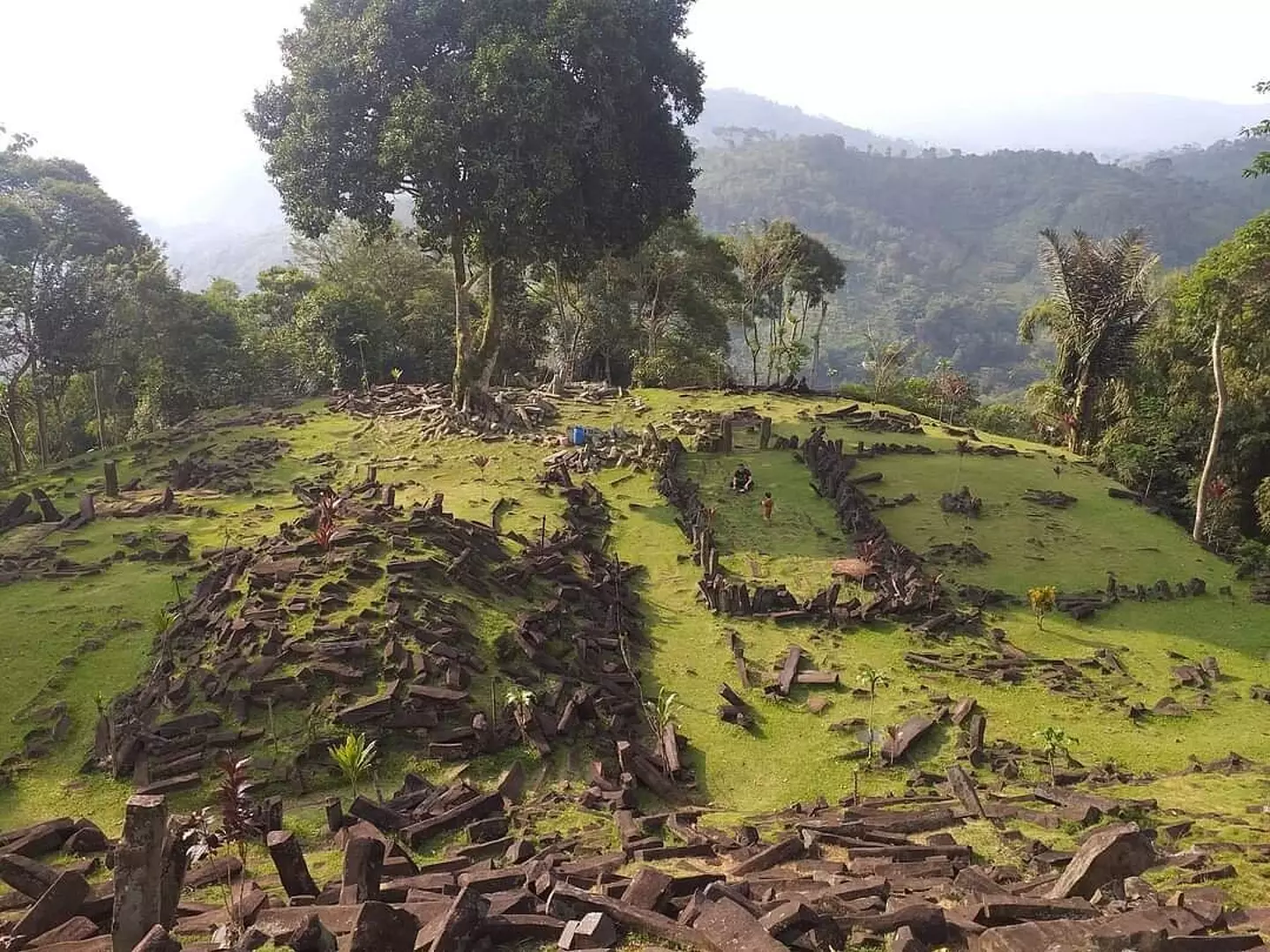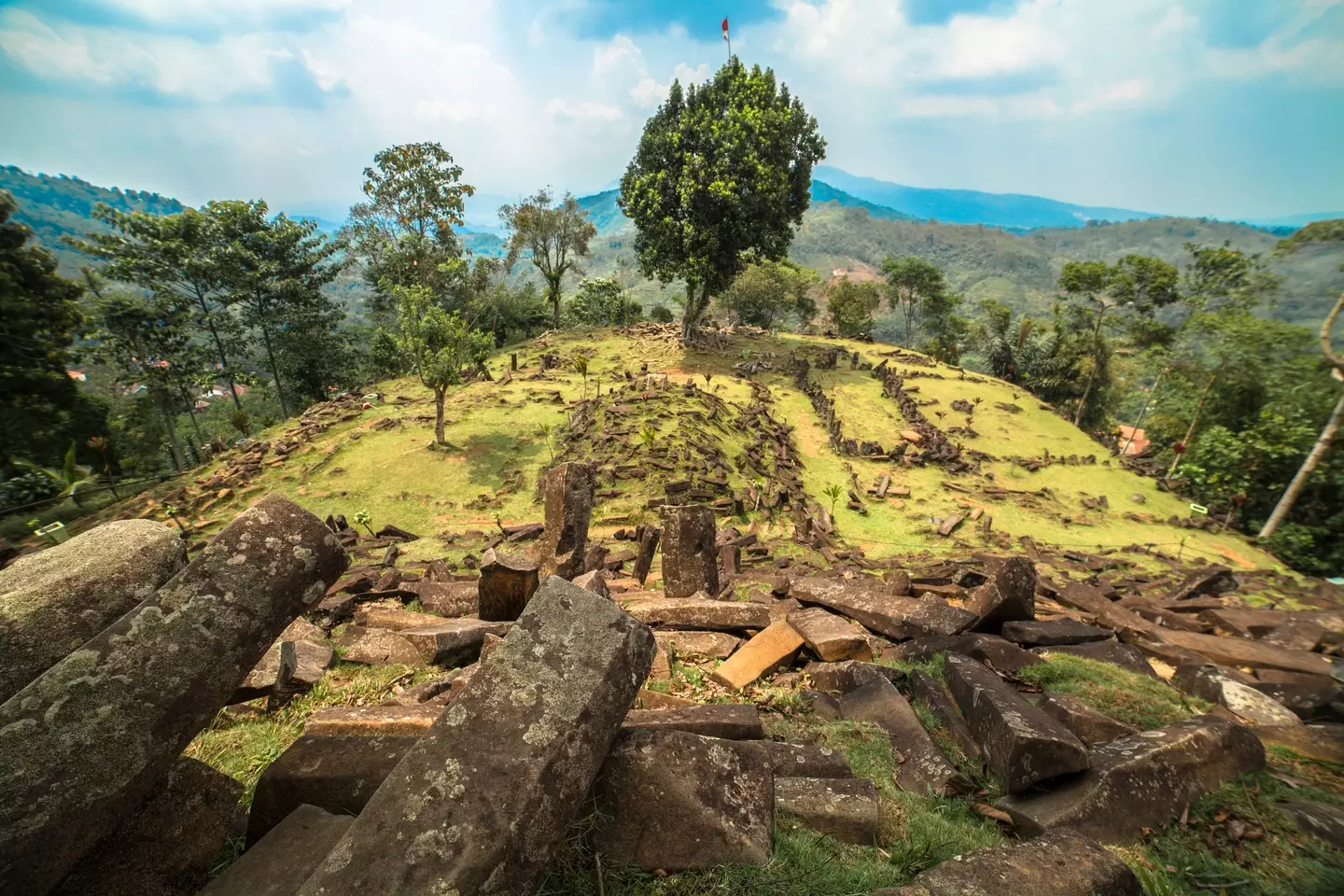
Archaeological experts have claimed that a famous pyramid may not be man-made after all.
Earlier this year, experts flocked to Gunung Padang and claimed to have found evidence of human activity at the site.
A group of archaeologists claimed that the structure in Java, Indonesia, was a ‘multi-layered prehistoric pyramid’ constructed before the end of the last ice age - some 25,000 years ago.
Authors of the study wrote: "Radiocarbon dating of organic soils from the structures uncovered multiple construction stages dating back thousands of years BCE, with the initial phase dating to the Palaeolithic era.
Advert
“This study strongly suggests that Gunung Padang is not a natural hill but a pyramid-like construction.”
Research at the time was led by Indonesian geologist Danny Hilman Natawidjaja and was published in Archaeological Prospection.
However, other archaeologists have since rubbished these findings and have raised questions over why the paper was published in the first place.
Flint Dibble, an archaeologist at Cardiff University, told Nature: “I’m surprised [the paper] was published as is.
Advert
Dibble has also critiqued Natawidjaja’s claim that the four stone layers underneath Gunung Padang’s terraces contained stonework that was ‘meticulously sculpted’.
He explained that there was ‘no clear evidence’ that the buried layers were built by human hands.
Dibble has also claimed that the ‘sculptures’ could have been a result of natural weathering and the movement of rocks over time.
“Material rolling down a hill is going to, on average, orient itself,” Dibble added.
Advert
He added that there was no evidence of ‘working or anything to indicate that it’s man-made’.

Another man who believes Natawidjaja’s claims are false is Bill Farley, an archaeologist at Southern Connecticut State University in New Haven.
The expert claimed the paper does not provide evidence that an advanced civilisation lived during the last ice age.
Advert
It’s also said that while the 27,000-year-old soil samples from Gunung Padang are accurately dated, they ‘do not carry hallmarks of human activity’.
Farley believes that because there are no charcoal or bone fragments present in the findings, there isn’t enough evidence to stand.
Following the claims, Archaeological Prospection and its publisher, Wiley, have launched an investigation into the paper.
Nature claims that Eileen Ernenwein - an archaeological geophysicist and co-editor of the journal - sent an email to them discussing the investigation.
Advert
She reportedly wrote: “The editors, including me, and Wiley ethics team are currently investigating this paper in accordance with Committee on Publication Ethics guidelines.”

However, the journal alleges that she ‘declined to elaborate on the nature of the concerns raised.’
Lead researcher Natawidjaja has clapped back at the ‘boy who cried wolf claims’ and has asked researchers to head to Indonesia.
“We are really open to any researchers around the world who would like to come to Indonesia and do some research programme on Gunung Padang,” he said.
“We know very little about our human history.”
So, while Gunung Padang has been branded as an ‘amazing, important and cool site’, it may not be the world’s oldest man-made stone structure after all.
If these reports are false, then the honour still goes to the Egyptian Pyramid of Djoser.
The latter was thought to have been built around 2630 BC for the Pharaoh.
Featured Image Credit: Getty ImagesTopics: Science, World News, History
